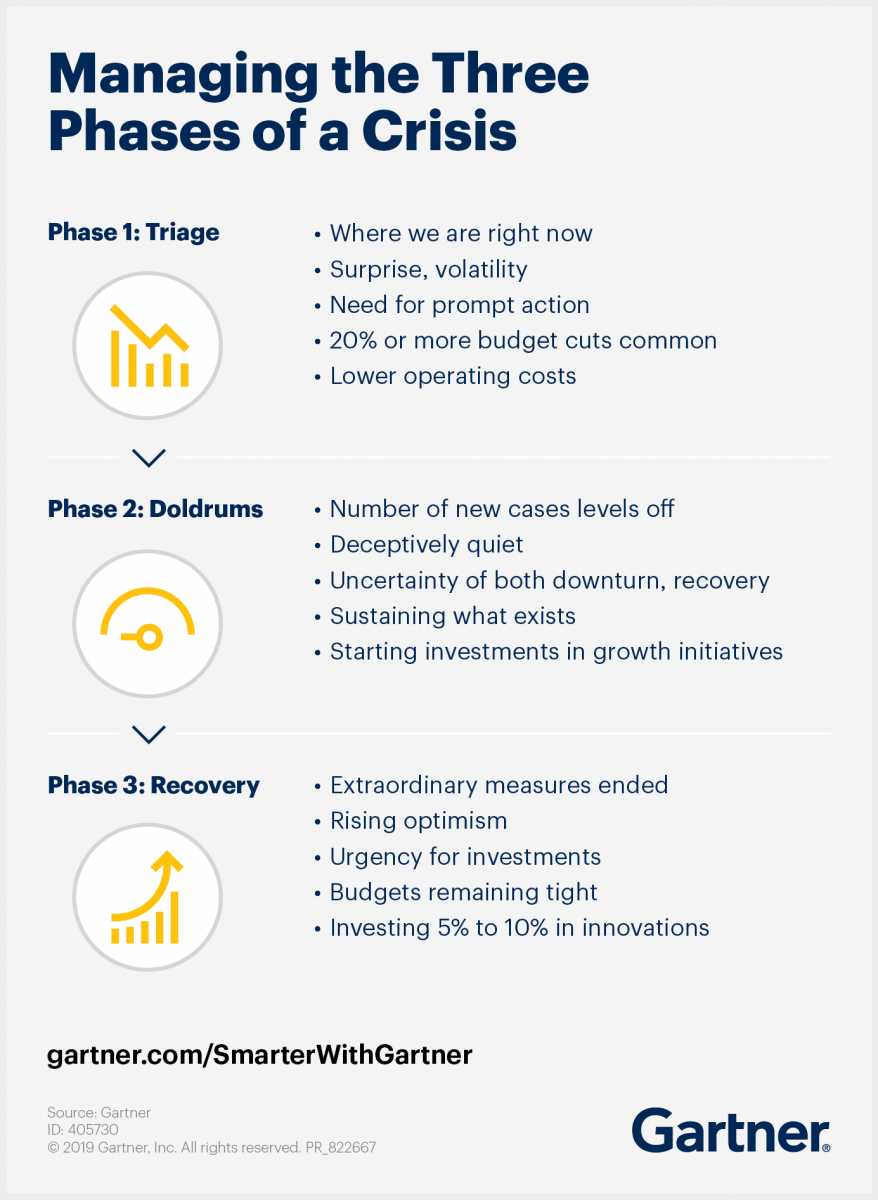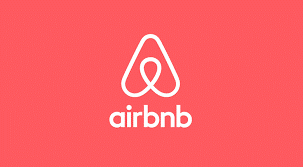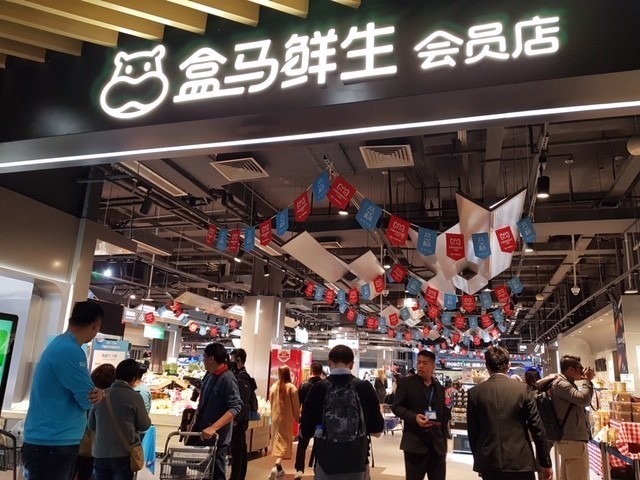Nearly every leader has faced moments of crisis, but the current COVID-19 pandemic is different from what we have faced in over a century. It has shuttered much of the global economy and many companies are now in for a tough ride until the economy fully recovers.
During this unprecedented time, leadership matters more than ever. What makes a good leader during this period of uncertainty? How should leaders guide their organisations to tide through the crisis? The challenge of a leader now is to keep the organisation and its people aligned, whilst anticipating and preparing for the oncoming challenges posed by the pandemic. Read on to find out what is a leader needs to do in this crucible of crisis.
“How our businesses, chief executives and other corporate leaders respond now will play a large part in determining whether we can defeat coronavirus without paying a huge price in lives and national wealth.”
– Ken Chenault, former CEO of American Express
Gartner, a research and advisory firm, has divided a crisis into 3 general phases. The initial stage of a crisis is identified as the ‘triage’ phase. When we reach the next phase ‘doldrum’, the economy will gradually restart with the declining number of coronavirus cases. By the last phase ‘recovery’, the emergency measures implemented by the government will slowly cease with high hopes for recovery in the economy. With this framework in place, leaders can strategically plan for diverse outcomes and develop scenario plans to guide their organisations through these three phases of recovery.

Source: Gartner
Phase 1: Triage
In the first phase, we face the highest volatility and uncertainty as the coronavirus situation worsens and global economy starts to decline. Responding to crisis in a timely manner is becoming increasingly important to safeguard the organisation and its employees’ interest. In this page, the virus cases might decline and then rise again when people try to engage in regular activities.
What can leaders do now?
During this COVID-19 crisis, some aspects of leadership now take precedence over others, as leaders fight against time to protect their organisations. Let’s take a look at what a leader can do during this point in time.
1. Never lose sight of your priorities
One of the responsibilities of a leader includes leading the organisation to focus on its priorities to reach its goals and achieve success. Draft out a dominant clear list of priorities. Then work with the business management team to attend to the higher priority needs first before moving down the list.
Disruptions such as the COVID-19 crisis can lead to confusion and uncertainty. Hence, having a clear list of priorities not only helps the management team to sort out the current information they have on hand, it also helps them to decide the next course of actions to take. This is essential for leaders to give a swift and high-quality response to emerging events. Nevertheless, it is important for leaders to always be able to distinguish needs that require immediate attention.
Note: Email Avvanz to learn more about “Time and Priorities Management”
2. Anticipate changes
Anticipation is important in ensuring that the organisation can ride out the storm in face of uncertainty. With the changing dynamics of this new-age economy, new technologies, processes, and business models are disrupting the market. As nobody can predict what the future will be like, we know how important it is to anticipate and identify opportunities and solutions to remain relevant in this day and age.
Dive deeper into your business management to identify the challenges that the different business units are facing.
Firstly, let us look at the business operations. Gartner reported that with the profits declining largely due to the pandemic, it is not surprising that some businesses find themselves having to cut more than 20% of its current costs. Businesses need to adapt their strategies to the dwindling economy by conserving their current assets and managing cash flows whilst brainstorming for new business innovations. The leader would need to lead his top management team to maintain the organisation’s cash flows without jeopardizing the business’s operations.
Secondly, organisational culture: What worked well before has changed now. Employees are now encouraged to work from home to reduce the community spread of COVID-19. Leaders would now have to look to the idea of digital transformation and create a digital workplace for the employees. The question now is, how can we transform the organisational culture into one that is very much digitalised to keep up in this VUCA (Volatile, Uncertain, Complex, Ambiguous) world?
Note: Email Avvanz to learn more about “Change Management” and “Digital Transformation using Disruptive Technologies” to learn how to leverage digital technologies to innovate and create changes, a skill that is very much needed during this period.
Moving on, as we learn to embrace the new normal, leaders need to reconsider the constituents of the current team they have. Upskilling and retraining are now necessary to equip their employees with sufficient knowledge of new systems and processes as they work from home. As for those working on site, leaders need to look into ways to protect their employees and ensure their safety and health, so that the organisation can still function well.

Let’s zoom in to Starbucks. As a retail store selling predominantly food and beverages, it is virtually impossible for their employees to work remotely. Even so, Starbucks has made significant efforts to protect its workers so that its shops can still function as per normal. The company is offering “catastrophe pay” to its United States baristas, for up to 14 days, if they have been diagnosed with or exposed to someone with the coronavirus. Employees would also be paid if they choose to stay home for the month of April when the coronavirus situation was widespread. By safeguarding the safety of its employees, Starbucks was able to minimize losses and continue operations as the stores slowly start to open when the severity of the coronavirus situation starts to drop.
Remember, employees are an organisation’s greatest assets and without them, the organisation would not be able to function well and sustain itself.

Lastly, leaders should also consider the other stakeholders in their business as well. It is necessary to maintain a good relationship with them for the business to function. For instance, considering the safety and well-being of both delivery riders and consumers, Singapore-based technology company Grab has implemented contactless food delivery. Apart from placing orders and making payment online, consumers can now get their food delivered (e.g. leave the food outside the door) without coming into contact with the delivery rider.
This contactless delivery process may be difficult to set up initially, but business leaders have to come up with different innovative ways to ensure business continuity during such a pandemic.
3. Effective communication
Communication matters. We live in an era of uncertainty coupled with rapid dissemination of information from various sources, verified or not. As a leader, you have to be the trusted source for your employees. With this, speaking up on the company’s situation and communicating future plans become ever more important as these can help to reduce the uneasiness and anxiety in employees.
Also, empathy and compassion have proven themselves to be of utmost importance during crises. Making tough decisions with compassion works best in delivering harsh and painful news to people.

CEO of Marriott International, Arne Sorenson, knew that he had to make certain decisions, as his hotel chain was badly hit by the coronavirus. The company had decided to furlough (grant a leave of absence) about 2,500 staff at its headquarters. So, in March, Sorenson used a video message to break this bad news to his employees face-to-face. He spoke honestly and truthfully about the situation at hand, delivering the news with empathy and compassion. He let the staff know that the company’s business profits had fell by 75% at that point in time, and it became necessary and inevitable to furlough and lay off employees. By using a video message as a medium, it brings along more sincerity and trust with the message.
Besides, this decision could be seen as a compassionate one as employees who were furloughed could still retain some benefits, as opposed to being totally unemployed. The management executives themselves also took up to a 50% pay cut while Sorenson and the executive chairman, Bill Marriott, took a 100% pay cut, for the business.
Communicating well means you are laying out the action plan for people to follow through, and for them to understand where you are coming from. This reduces frustration and panic for all as everyone would have a common understanding.
Note: Email Avvanz to learn more about “Impacting communication and Influencing skills”
4. Be compassionate
Leaders often find themselves having to make tough decisions such as laying off employees. For retrenchment, using a compassionate approach could very much make a huge difference to both the employees as well as the organisation’s image.
When having to stop operations, businesses could choose to furlough workers like what we read earlier. The advantage of this flexible approach is that workers could return to their original work post-virus more easily than when they are retrenched. Re-hiring can be a more costly exercise. Since they are still officially employed, they would still be entitled to some employee benefits.
However, in the case where businesses are too severely affected by the pandemic, they may find themselves having to lay off people as their last resort in order to survive the crisis. In these cases, leaders should always be compassionate whilst making such decisions.

For instance, we can look at Airbnb’s way of compassionate layoff. While announcing a global layoff of about 1,900 employees, the online travel agency launched an Alumni Talent Directory on LinkedIn. The talent directory contained the names and profiles of the employees who were laid off, in a bid of increasing the chances of these employees finding new job opportunities. Airbnb’s method provided a lot of care and support for those retrenched employees and took concrete steps in helping them tide through this tough period as well.
Note: Email Avvanz to learn more about “Emotional intelligence” and “Managerial Intelligence“.
Phase 2: Doldrums
As we progress into phase 2 of the crisis, the doldrum phase, we are starting to see the turn where economy gradually starts to restart. The initial panic might have slowly died down, but the confidence has yet to fully return.
What can leaders do now?
1, Organisational Reform
This may possibly be the best time to explore innovation by looking back at the issues the organisation faced and thinking of new ways to solve these issues more efficiently. How can we use these as stepping stones to transform the organisation? With most organisations having to work remotely due to the COVID-19 pandemic, can businesses use this as an opportunity to develop new creative options to deliver their products and services digitally? This could become a great start to build digital transformation culture in the organisation.

For instance, Canadian-based global e-commerce Shopify has recently announced themselves to be a ‘digital company’ by default. The CEO and founder Tobi Lutke tweeted on 21 May 2020 that they will officially close their offices until 2021 to work on their systems to prepare for the new normal. After which, Shopify would allow the bulk of their employees to work remotely permanently. This could become the new future of digital workplaces as organisations start to embrace digital transformations.
2. Invest
Start by looking at new business plans that embrace the new normal. Look at new innovations and new business interests. Explore and start to invest in them.

For instance, Berkshire Hathaway started making major investments during the global financial crisis in 2008. They invested in blue-chip companies such as Goldman Sachs and Bank of America, which eventually recovered well from the financial crisis. In fact, CEO of Berkshire Hathaway, Warren Buffett had made about $10 billion during the crisis!
Phase 3: Recovery
As we move past the crisis and enter the recovery stages, businesses start to become more stable. Cash flows are more liquid now and demand for the business services or products could even spike up. The previous investments undertaken during the phase 2 could start to see positive results as the outlook of the global economy starts to brighten up. Leaders can afford to spend more time and effort into looking out for new business plans and investments.
What can leaders do now?
1. Continue investing
Organisations should continue to prepare and anticipate for future changes, be it in terms of investing financially, investing in new equipment and technologies, or even investing in its people. Plan early for the future because you never know when a crisis could hit again.
2. Learn from the crisis
Ensure a robust business continuity planning framework is in place to expect the unexpected. What if another mysterious calamity like this Covid-19 arrives? It is critical to be operationally ready and the Leader needs to ensure the entire organization has the growth mindset to be ever ready for any kind of “war”.
Email Avvanz to learn more about “Leadership in Crisis”.
Conclusion:
COVID-19 caught us all by surprise and even the best leaders were caught off-guard. Learn to anticipate and don’t be afraid to face challenges upfront as for every crisis comes an opportunity to innovate and bounce back higher.
Before we end, let’s take a look at one last organisation who went all out to create an innovative solution that not only solves its own issues, but also helped many other companies on a national level.

China’s unemployment rate worsened when it went into a lockdown due to COVID-19 in the earlier months of 2020. However, during this pandemic period, Alibaba’s grocery chain Freshippo flourished as more consumers opt for online shopping and house delivery. The sudden spike in demand led to a manpower shortage issue as the grocer required more hands to pack these orders and deliver to the customers.
Freshippo then came up with an extremely creative solution of employee sharing in February. They hired more than 5,000 excess workers from affected industries, such as restaurants, karaoke bars, taxi companies and others.
The scheme allows the workers to be shared between partner companies. For Freshippo, the ‘borrowed’ workers are official employees of their original company and are still entitled to their employee benefits. When they work at Freshippo as temporary workers, Freshippo will remunerate them on an hourly basis. When the economy picks up eventually, these employees will return to their old jobs under their original company. This not only helps to ease the manpower shortage in Freshippo’s stores but also ensures that furloughed workers have a stable income during the pandemic. Many other Chinese companies, such as e-commerce player JD.com, picked up this idea as well.
Alibaba announced that they have plans to make this a permanent move to help workers in the long term. In fact, Alibaba is already investing and preparing to roll out a digital platform to formalise this practice for the company. With this new scheme in place, it will be more convenient for Alibaba to find temporary workers during their peak seasons, at the same time benefiting gig economy workers as well as those in seasonal employment.
Let’s keep in mind what we can do during each phase and come out of every crisis as a more seasoned and evolved leader.
Author: Chin Yan Bing – Business Undergraduate from Nanyang Technological University
Sources:
- Abudheen K, S. (2020, May 15). Compassionate layoff — Airbnb shows the way. Retrieved June 20, 2020, from https://e27.co/compassionate-layoff-airbnb-shows-the-way-20200515/
- Chiu, K. (2020, March 20). Forget bike sharing: China tries employee sharing during pandemic. Retrieved June 20, 2020, from https://www.scmp.com/abacus/culture/article/3076134/forget-bike-sharing-china-tries-employee-sharing-during-pandemic
- Grab. covid-19. (n.d.). Retrieved June 8, 2020, from https://www.grab.com/sg/safety/covid-19/
- Hempel, J. (2020, May 12). Beyond the Call: How companies have stepped up during COVID-19. Retrieved June 8, 2020, from https://www.linkedin.com/pulse/beyond-call-how-companies-have-stepped-up-during-covid-19-hempel/?src=aff-lilpar&veh=aff_src.aff-lilpar_c.partners_pkw.10078_plc.Skimbit Ltd._pcrid.449670_learning&trk=aff_src.aff-lilpar_c.partners_pkw.10078_plc.Skimbit Ltd._pcrid.449670_learning&clickid=R0SW5dWo4xyOUjiwUx0Mo3Q3Uki3SwVxawMKzQ0&irgwc=1
- Kelly, J. (2020, May 24). Here Are The Companies Leading The Work-From-Home Revolution. Retrieved June 23, 2020, from https://www.forbes.com/sites/jackkelly/2020/05/24/the-work-from-home-revolution-is-quickly-gaining-momentum/
- Li, J. (2020, April 24). Employee-sharing schemes are softening the blow for China’s pandemic-hit businesses. Retrieved June 20, 2020, from https://qz.com/1843631/chinas-pandemic-hit-businesses-share-employees-with-others/
- Mesaglio, M. (2020, March 19). 4 Actions to Be a Strong Leader During COVID-19 Disruption. Retrieved June 8, 2020, from https://www.gartner.com/smarterwithgartner/4-actions-to-be-a-good-leader-during-covid-19-disruption/
- Panetta, K. (2020, April 20). Use This 3-Phase Framework to Navigate the COVID-19 Downturn. Retrieved June 8, 2020, from https://www.gartner.com/smarterwithgartner/use-this-3-phase-framework-to-navigate-the-covid-19-downturn/
- Stankiewicz, K. (2020, March 24). Marriott CEO: Coronavirus outbreak worse for business than 9/11 and 2008 financial crises combined. Retrieved June 15, 2020, from https://www.cnbc.com/2020/03/24/marriott-coronavirus-worse-than-911-and-financial-crisis-combined.html
- Starbucks temporarily moving to primarily drive-thru-only in U.S., confirms expanded catastrophe pay for worried partners. (2020, March 20). Retrieved June 8, 2020, from https://stories.starbucks.com/stories/2020/starbucks-temporarily-moving-to-primarily-drive-thru-only-in-us-confirms-expanded-catastrophe-pay-for-worried-partner/



